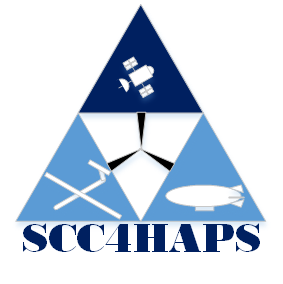
-
StatusOngoing
-
Status date2024-03-25
-
Activity Code6B.059
The ultimate project aim is to ease the adoption of HAPS by telecommunication satellite operators, by paving the way to integrated multi-layer (satellite, HAPS and ground) operations. The immediate project objective is defining and demonstrating the adaptations needed to their “existing satellite control systems” to operate HAPS in an integrated way. It is understood that in addition to existing satellite control systems, also existing HAPS control centre or even UAV stations commercial solutions will be considered, both as source of requirements and for potential integration at design or future implementation.
From GMV’s point of view integration at the level of operations doesn’t mean necessarily integration at the level of software solutions in the sense of having all “multi-mission” applications supporting both satellite and HAPS; instead, such multi-layer integration can be achieved by a suite satellite-specific, HAPS-specific and “multi-mission” applications, all working together in a coordinated way. This will also allow more flexible deployment approaches which can be interesting in different contexts: e.g. for deployment of a local control centre at the stratoport for some flight phases.
A major challenge is the large number of system definition that are possible. It is possible that the number of technical solutions for each aspect and the combination of them makes the team lose focus.
Another major challenge is the large range of disciplines involved in the project, e.g. HAPS flight and operations particularities, satellite operations concepts, mega constellation implications, planning concepts, and knowledge of the specific solutions selected for the demonstrator.
A challenge will be the project development by GMV Romania and the knowledge and expertise transfer which is put into place whenever it is needed by GMV group.
From the technical point of view, it is anticipated that the major challenge will be to design, implement and demonstrate the scalability requirements. GMV has already devoted some effort to think about this problem and this knowledge and experience will be put at the service of this project.
The planning function will depend also on the complexity of the platform operation, the complexity of the payload operations and the stability of the communications links with ground, inter-HAPS and HAPS-satellite.
When combined with satellite communication advantages, a multi-layer (terrestrial-HAPS-satellite) solution can be considered. It is more beneficial to operate a hybrid control centre by integrating HAPS into existing satellite systems for delivery of wide telecommunication services in area not covered by satellites or ground infrastructure. This solution will reduce the deployment of ground infrastructure and the expensive satellite one.
With HAPS traffic can be more concentrated in a specific area for Ultra-broadband Internet services, being able to offer services with more capacity per user. Low latency (comparable to terrestrial), high-capacity density, services similar to terrestrial ones delivered using small terminals with / without tracking.
Direct 3G/4G services provided by HAPS will provide BTS users with direct connection to HAPS that would act as a link with the terrestrial cellular network with low latency.
Cellular backhauling services provided by HAPS are characterized by reduced latency and much simpler ground infrastructure.
Receiving station for IoT / M2M messages, characterized by low latency, wide coverage, much simpler ground infrastructure (remote areas with no terrestrial networks).
HAPs can be used to provide emergency services thanks to their rapid deployment to the affected area.
The integrated satellite and HAPS control centre is capable to seamlessly supervise, manage, coordinate, monitor, control, plan the activities in a automate way for a fleet of hundreds of satellites and HAPS using the same control centre.
The following components are included in the functional architecture: Supervision and Data Analytics, Data Management, Monitoring and Control System (MCS), Programming System (PROG), Procedure Preparation and Execution (PROC), Flight Dynamics System (FDS), HAPS Flight Management (HAPS), Encryption/Decryption solution (CRYPT), Operations Planner (PLAN), SATCOM Payload Management (SATCOM) and Cybersecurity (CYBER).
-
Awareness (AWA) subsystem.
-
Technical monitoring (MON) subsystem.
-
Archiving and Analytics (ANA) subsystem.
-
Events and alerts (EVENTS) subsystem.
The Data Management is made of the following subsystems:
-
Data Alignment (DATA) subsystem.
Satellite Database (DB) subsystem.
The integrated satellite and HAPS control centre is thought being a final SCC solution which make use of multiple off-the-shelf GMV products. Additionally, an innovating HAPS Management & Control Module will be integrated within the existing structure in order to offer the client full control on both satellites as well as pseudo-satellites.
SCC4HAPS is a project initially scheduled for 18 months and consists of the following milestones:
-
Kick Off Meeting (KOM) – milestone marking the start of the project.
-
Progress Meeting 1 – intermediate progress meeting
-
Software Requirements Review (SRR) – milestone marking the acceptance of the target software requirements.
-
Progress Meeting 2 – intermediate progress meeting
-
Critical Design Review (CDR) – milestone marking the design process completion.
-
Test Readiness Review (TRR) – milestone marking the project readiness to proceed with the test campaign.
-
Qualifying Review (QR) – milestone marking the success of the testing campaign.
Acceptance Review (AR) – milestone marking the acceptance of the project.
The project is closed. SCC4HAPS has successfully passed the AR milestone and all requirements have been fully validated. Two demonstration flights have been performed successfully. The software is currently at TRL6.




